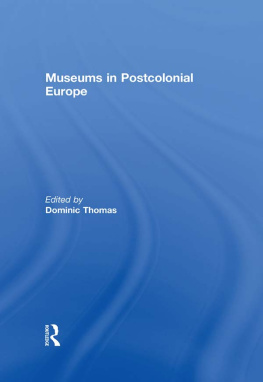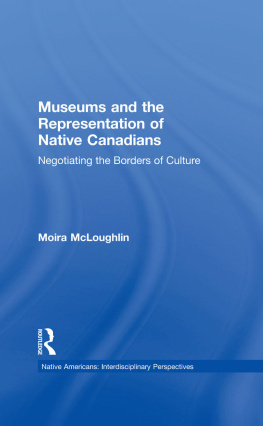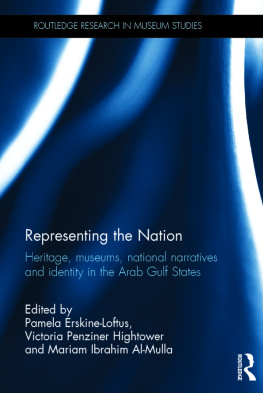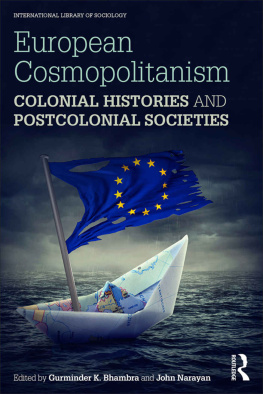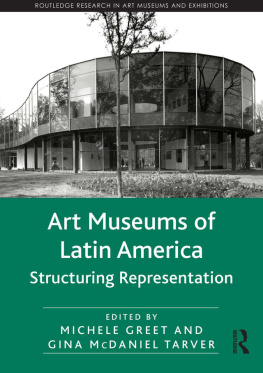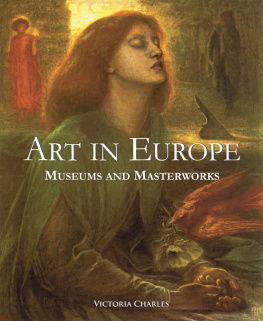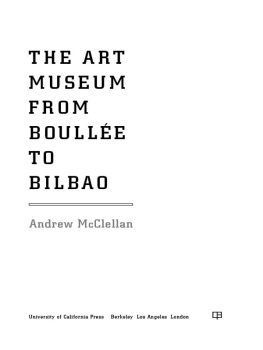Museums in Postcolonial Europe
The history of European nation-building and identity formation is inextricably connected with museums, and the role they play in displaying the acquired spoils and glorious symbols of geopolitical power in order to mobilize public support for expansionist ventures. This book examines the contemporary debate surrounding the museum in postcolonial Europe.
Although there is no consensus on the European colonial experience, the process of decolonization in Europe has involved an examination of the museum's place, and ethnic minorities and immigrants have insisted upon improved representation in the genealogies of European nation-states. Museological practices have been subjected to greater scrutiny in light of these political and social transformations. In addition to the refurbishment and restructuring of colonial-era museums, new spaces have also been inaugurated to highlight the contemporary importance of museums in postcolonial Europe, as well as the significance of incorporating the perspective of postcolonial European populations into these spaces.
This book includes contributions from leading experts in their fields and represents a comparative trans-historical and transcolonial examination which contextualises and reinterprets legacies and experiences of European museums.
This book was published as a special issue of Africa and Black Diaspora: An International Journal.
Dominic Thomas is the Chair of the departments of French and Francophone Studies and Italian at the University of California Los Angeles, USA. He is the author of Nation-Building, Propaganda and Literature in Francophone Africa (Indiana University Press, 2002) and Black France: Colonialism, Immigration and Transnationalism (Indiana University Press, 2007).
Museums in Postcolonial Europe
Edited by Dominic Thomas
First published 2010 by Routledge
2 Park Square, Milton Park, Abingdon, Oxon, OX14 4RN
Simultaneously published in the USA and Canada
by Routledge
270 Madison Avenue, New York, NY 10016
Routledge is an imprint of the Taylor & Francis Group, an informa business
2010 Taylor & Francis
Typeset in Times New Roman by Value Chain, India
All rights reserved. No part of this book may be reprinted or reproduced or utilised in any form or by any electronic, mechanical, or other means, now known or hereafter invented, including photocopying and recording, or in any information storage or retrieval system, without permission in writing from the publishers.
British Library Cataloguing in Publication Data
A catalogue record for this book is available from the British Library
ISBN10: 0-415-56135-3
ISBN13: 978-0-415-56135-8
Contents
Dominic Thomas
Robert Aldrich
Corinna McLeod
Zoe Norridge
Vronique Bragard and Stphanie Planche
Fassil Demissie
Bennetta Jules-Rosette and Erica Fontana
Herman Lebovics
Mary Stevens
Dominic Thomas
Dominic Thomas
Departments of French and Francophone Studies, University of California, Los Angeles, USA
Government ministries have historically played a central role in sponsoring imperial ambitions overseas, in supporting the establishment of museums in which to display the acquired spoils and glorious symbols of geopolitical power, and in mobilizing public support for these expansionist ventures. In turn, decolonization has entailed an interrogation of relationality between former colonial powers and colonized subjects alongside claims and demands that have been made by ethnic minorities and immigrants insisting upon improved representation in the genealogies of European nation-states. Museological practices have been subjected to greater scrutiny in light of these political and social transformations, and a comparative transhistorical and transcolonial analysis of European museums stands to improve the contextualization of these experiences and legacies. In addition to the refurbishment and restructuring of colonial era museums, new spaces have also been inaugurated thereby further highlighting the contemporary importance of museums in postcolonial Europe as well as the significance of incorporating the perspective of postcolonial European populations into these museums.
Almost nothing displayed in museums was made to be seen in them. (Vogel 1991, p. 191)
The visual discourse of race involves a conceptual and categorical slippage between the body as object and the body as subject. A parallel slippage occurs when the material culture of everyday life, such as artifacts collected in museums of art and anthropology or forms of commodity production and consumption, participate in the construction of race discourse by supporting processes of subjection. Objects come to stand in for subjects not merely in the form of commodity fetish, but as part of a larger system of material and image culture that circulates as a prosthesis of race discourse through practices of collection, exchange, and exhibition. (Gonzlez 2008, p. 5)
The history of European nation-building and identity formation is inextricably connected with complex display practices in which the lines of demarcation between human and material entities have become indistinct, yielding as a consequence an apparatus of signifiers relating to objectivity and subjectivity that require examination and scrutiny (Bancel et al. 2009; Gonzlez 2008). The study of exhibition sites in Europe during both the colonial and postcolonial eras provides an opportunity to engage in comparative historical analysis and to improve the contextualization of the official and public discourse they have triggered. Europe and other regions of the world are symbiotically linked through a long history of contact informed by slavery, colonialism, immigration, and a multiplicity of transnational networks and practices. In recent years, these factors have informed both national and pan-European debates concerning the legacies of these encounters and their current reformulation with regard to transhistorical phenomena that impact ethnic minorities and immigrant populations. These concern a broad set of cultural, economic, political and social factors that include reflection on the limits and pertinence of reparation and restitution, the study and reassessment of colonialism, the role and instrumentalization of memory (Bancel and Blanchard 2008, p. 140; Coquio 2008; Weil 2008), the status of postcolonial subjects and ultimately the dynamics of a multicultural Europe.
The exploration of these issues begins with Robert Aldrich's examination of colonial museums. This historical background proves crucial to the process of assessing the broad range of mechanisms deployed for commemorative purposes, and in particular to improving our understanding of the role played by the museums that actually exhibited empire. The metamorphosis of European museums from the colonial to the postcolonial era effectively mirrors disquiet about the heritage of imperialism, and with decolonization, the inheritors of colonial museums and collections were confronted with the challenge of assessing the legacy of the past and establishing its connection with contemporary postcolonial communities. Moving to a transcolonial application of these findings in postcolonial Europe, Corinna McLeod looks at the British and Commonwealth Museum in an attempt to grapple with Britain's history of imperialism and colonialism. This analysis reveals the tenuous nature of what are inherently contradictory goals, namely the act of celebrating empire and the requisite need to acknowledge Empire's brutality. What emerges from this ambiguous situation is an engagement with questions pertaining to national identity formation and the imperatives of multicultural community alignments in Britain today. The connections with Zoe Norridge's consideration of Hackney Museum's exhibition Abolition 07 are compelling in terms of the ways in which multicultural museum spaces can assist in the process of reimagining narratives. In this instance, Norridge demonstrates how this London borough, upon whose residents the slave trade had had a direct impact, memorialized the abolition of the slave trade. The originality of this exhibit came from the concerted effort that was made to encourage young visitors to adopt an ethics of empathy that would in turn foster a collective response to the past alongside sentiments of pride in the borough's abolitionist history. Naturally, such an approach is accompanied by significant limitations, but arguably such identifications across time, space and race constitute effective strategies for establishing transhistorical connections. Vronique Braggard and Stphanie Planche turn their attention to museum practices in Belgium and to the traces left by colonialism on Belgium's architectural landscape. Striking points of commonality are to be found concerning the necessity of confronting the colonial legacy in more complex and creative terms, and the outcome of museological strategies is shown to be increasingly mediated through debates relating to the parameters of national identity in a postcolonial Belgium.

